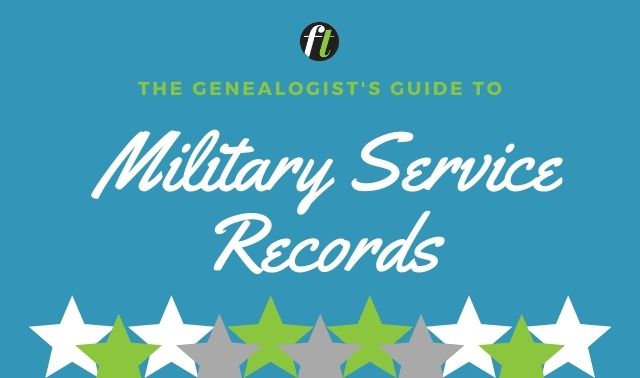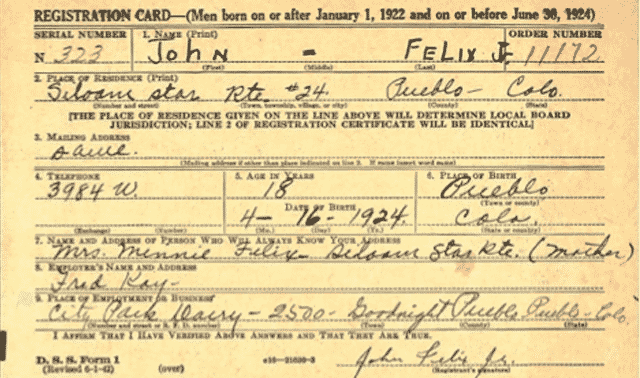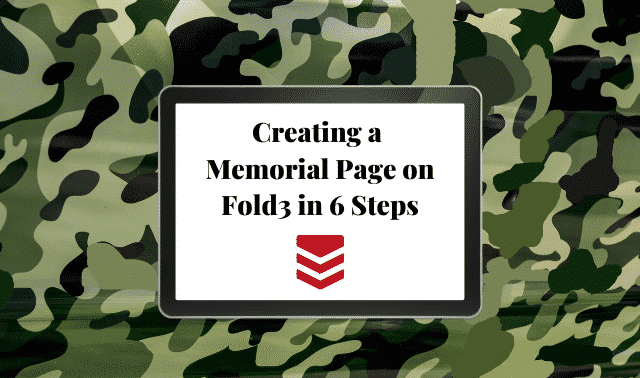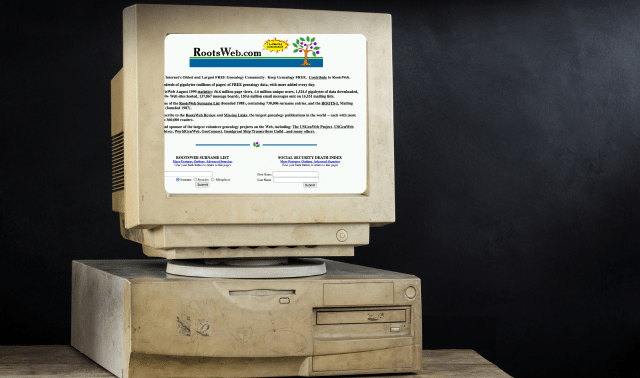Sign up for the Family Tree Newsletter! Plus, you’ll receive our 10 Essential Genealogy Research Forms PDF as a special thank you.
Get Your Free Genealogy Forms
"*" indicates required fields
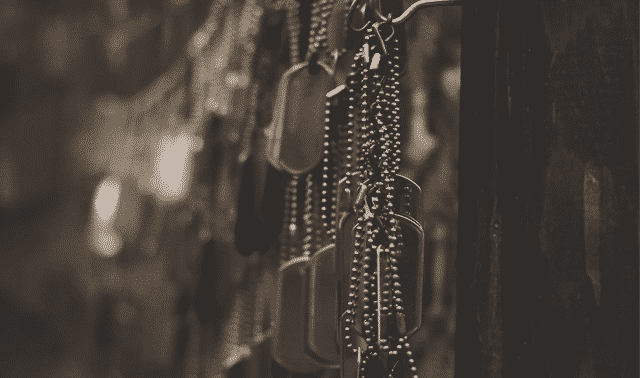
Fold3 aims to be the premiere online source for researching US military records. Launched in 2007 as Footnote.com, the site originally sought to publish a range of digitized original documents from the National Archives and Records Administration (NARA) and other repositories. Ancestry.com acquired Footnote in 2010 and narrowed the site’s focus to military records. Ancestry.com later renamed the site Fold3, a reference to the flag-folding ceremony in which the third fold is said to memorialize veterans.
Key resources here include Revolutionary War pension files (from NARA microfilm M804, which has the complete pension files); a growing collection of War of 1812 pension records (free to access without a subscription and digitized as part of the Preserve the Pensions Project); Civil War service records; some Civil War “Widows’ Pensions;” FBI Case Files; WWII “Old Man’s Draft” registration cards; and photos, Navy cruise books and casualty lists from more recent wars.
Nonmilitary records from the Footnote days include city directories, naturalizations, Native American enrollment cards and Nebraska homestead records. You also can search the indexes to pensions on FamilySearch, but you need to follow the links to Fold3 to view record images.
Most of Fold3’s key military records, such as Revolutionary War pension and service files, indexes to service and pension files from the War of 1812 and the Civil War, and draft registration cards the World Wars, are also available on Ancestry.com. Many record indexes are searchable at FamilySearch, which sends you to Fold3 to view the record.
These search techniques will help you find your ancestors’ records among Fold3‘s bounty.
1. Search for a Name
Use the search boxes at the top of the home page to find a name in all the site’s records. The Search tab lets you add other criteria. Those include a keyword that might appear in the record you want, the place, a year range, and how recently the record was added to Fold3 (great if you’re repeating a search and want to see only new results).
You also can decide whether to get results in records indexed by optical character recognition (OCR) software, such as newspapers and city directories. In these records, a first and last name you type may not appear close together. To improve your results in OCR-indexed records, search on a name as a phrase in the keyword box, such as “John Q. Smith” and “Smith John Q.”
For example, a search on the name of my relative Frank Shaubut produces a few matches. One, an index to Civil War service records, says he was a private in Company E of the 9th Infantry of the Minnesota Volunteers. Two matches in city directories show he worked as an accountant in New Orleans in 1867 and 1868. Another match is a memorial page where Fold3 members can add photos, stories, facts and links to more information about him.
2. Filter Your Results
If your search doesn’t produce the records you want, try a broad search with just a name, then use Fold3’s sophisticated filters to narrow your results. The right side of your search results page will show every record matching your search. To the left, you’ll see filtering options. There, checkboxes let you limit your results to specific military conflicts, to nonmilitary records, or to contributions from Fold3 members (such as memorial pages and photo uploads).
Click the Add a Date or Add a Place buttons to add more filter options. The former gives you a timeline and calendar, while the latter allows you to drill down from country to state to city.
3. Focus on Fold3’s Key Collections
On the home page, click on a war to view lists of popular record collections and new or updated collections. For example, click on US Revolutionary War and you’ll see a summary page about the conflict, including a few featured publications and a search bar to search all records from that conflict. The most popular collections in each group are usually the largest and most useful ones.
4. Browse Collections
If you want to see what collections Fold3 has for a given conflict—or you know when and where your ancestor’s record was created—browse to the record set you want, then navigate through it page by page. Click on the Browse tab and select a category on the left (such as Civil War Union), then select a publication.
You can do a search at any point when drilling down through the hierarchical record arrangement by using the search box at the top of the page. For example, you could search the entire Civil War category or work your way down the levels to the Civil War Pensions Index, a state, an arm of service (such as cavalry or infantry), and, finally, company. So if a search for a soldier doesn’t turn up a match in the pensions index, but you know the unit in which he served, you could browse the records for that unit.
Subcategories depend on how the collection is organized—you might select a volume number, year range, place or alphabetical range.
When you’ve homed in on record images, click one to open it in the Fold3 viewer. Click the filmstrip icon at the bottom to page through the records. Note that you can download only one page at a time, which can take a while for long service records and pension files.
5. Get Copies of Records
If you find a reference to a record that’s not online, order a copy. For example, Fold3 has digitized index cards to War of 1812 and Civil War pensions, but doesn’t have all the pension applications online. Pension applications usually provide more family information than service files, making them worth seeking out.
In person at NARA, you can make copies from paper records. You can also request copies by mail or online for a fee. You can receive your order as a paper reproduction or as PDF files on a CD or DVD or by email.
Order fulfillment can take up to a year, so it’s often faster—and cheaper—to hire a professional researcher. See NARA’s list of researchers available for hire. Look for one in the Washington, DC, area who specializes in genealogy and family history records or military records.
Be a Fold3 Search Master with These 7 Tips:
1. Search with a wildcard.
If you’re unsure how your relative’s name is spelled in a record, you can search with wildcards. Use an asterisk * to stand in for any number of letters. For example, a search on the last name Olmst*d finds Olmsted and Olmstead.
2. Get a free trial.
Click the 7-Day Free Trial link on the home page to try Fold3 for free. You’ll have to enter your contact information and credit card. If you don’t want to purchase a subscription, you must cancel before the end of the trial to avoid charges. You can do so using the Account Details link under your user name.
Additionally, FamilySearch Centers and participating libraries have complimentary access to Fold3.
3. Access free records.
Note: Searching records is free, but you’ll need to subscribe to view most record details. Run a few searches for your ancestor’s name before subscribing to see if the site has records you’re interested in.
That said, some collections at Fold3 are totally free to access. From the bottom of the page, click List All Records, then look for collections that have a Free icon in their title. Some notable free collections include:
American Battle Monuments Commission
Bounty-Land Warrant Applications Index (War of 1812)
Dachau Entry Registers (WWII)
Medal of Honor Recipients, 1863–2013
Navy and Marine Corp Officers, 1775–1900
4. Annotate records.
When you find a record of interest, use the plus button in the image viewer toolbar at the top to add notes about people, places and dates the record mentions. For example, if a record refers to a woman by her married surname, you could add her maiden name. These annotations become searchable, and others interested in that record can contact you through the site. Note that the plus button on the right enlarges the image.
5. Don’t give up on bad links.
Occasionally, a name in an index is linked to the wrong record, but if you browse around, you might find the right record. Searching for the name Reuben Shaubhut, I got a match in US Veterans Administration Pension Payment Cards. But it links to the card for Joseph Shaubarker. I clicked on View Larger and then on the left arrow to navigate to the previous image and, voilà! It’s the card for Reuben Shaubhut.
6. Create a memorial page.
You can honor veterans and other ancestors by creating memorial pages with photos, stories and links to Fold3 records. To start with one of the automatically generated pages created from WWII Army Enlistment records, the Social Security Death Index and other data sets, search for a name. You also can click Memorials > Create a Memorial. You can create pages about any person, place or historical event. Access your pages by clicking Memorials > Your Memorials.
7. Attach records to your tree.
Have an Ancestry Member Tree? Click the Save to Ancestry button in Fold3’s image viewer to add the record to a profile in your tree.
A version of this article appeared in the March/April 2017 issue of Family Tree Magazine. Last updated November 2023.

